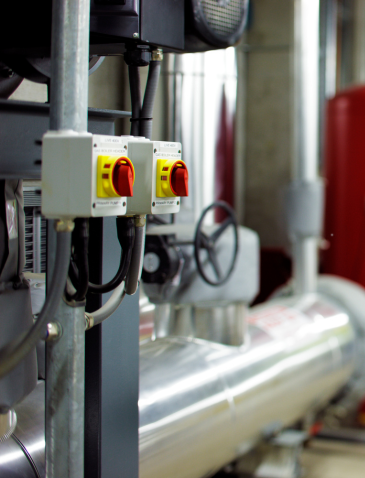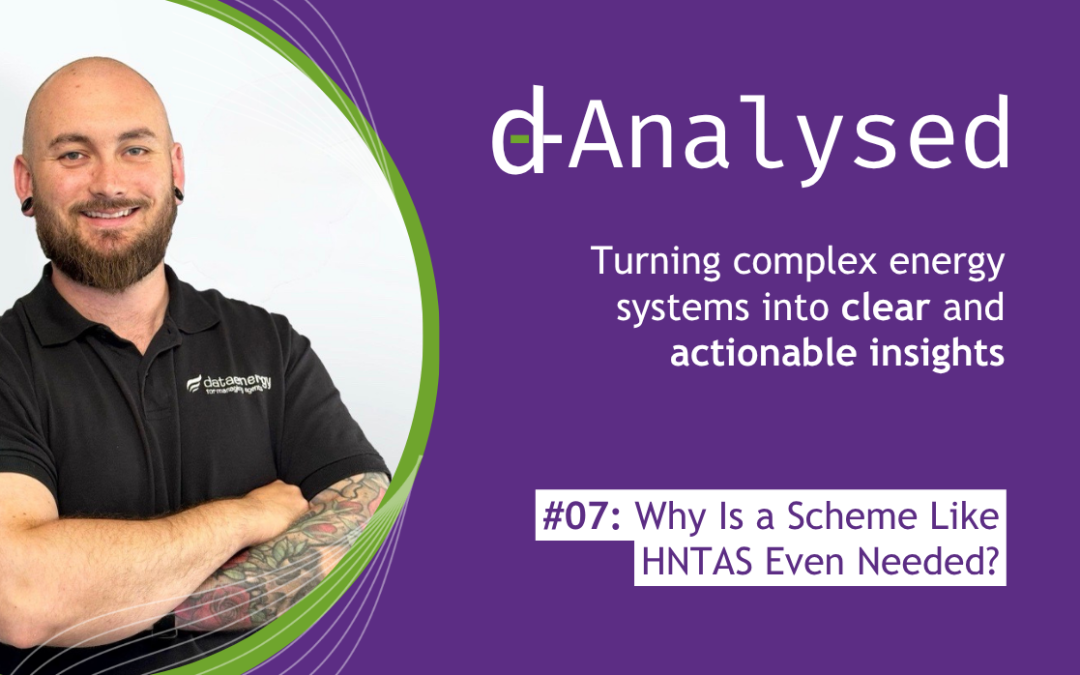To understand HNTAS, you have to understand the problem it’s solving.
The UK has over 17,000 heat networks, with thousands more expected under upcoming heat zoning regulations. But because the industry has grown without consistent standards, networks vary drastically in performance. Some work brilliantly. Others? Not so much.
HNTAS stands for the Heat Network Technical Assessment Scheme.
It’s a new compliance framework being developed by Ofgem to improve how heat networks are designed, measured and operated. In plain terms: it’s a rulebook to make sure networks are efficient, fair, and fit for purpose.
Some common issues of inconsistent network performance include:
- Inaccurate or missing meters
- Unreliable billing or estimates based on guesswork
- Poor system design, leading to inefficiency and high costs
- No access to real-time performance data
- Consumers unable to challenge their heat charges
This lack of consistency and accountability is why Ofgem has been appointed as the official heat network regulator. And HNTAS will be one of its main tools to raise the bar.
What Heat Network Technical Assessment Scheme Will Actually Cover?
While the final version of the scheme is still in development, early guidance suggests that Heat Network Technical Assessment Scheme will focus on some key pillars.
Key pillars include:
1. Metering and Billing Accuracy
At the heart of any heat network is the ability to measure what’s used and bill for it fairly. That means:
- Every flat or dwelling must be individually metered
- Meters must be MID-approved, readable remotely, and regularly maintained
- Billing must be transparent, itemised, and based on real usage, no more estimates
2. System Design and Efficiency
HNTAS will promote designs that are:
- Properly sized (avoiding overspec’d systems that waste energy)
- Using low return temperatures for better efficiency
- Built with proper controls and hydraulic balancing
This is especially important for retrofits, where older HIUs or legacy pipework may no longer be fit for purpose.
3. Operational Performance
It’s one thing to design a network to spec, it’s another to operate it that way. HNTAS will likely include:
- Regular performance monitoring
- Access to real-time data logging and trend analysis
- Clear accountability for issues like outages, low flow temperatures, or billing disputes
4. Resident Outcomes and Transparency
Ultimately, HNTAS is about improving outcomes for residents. That includes:
- Fair pricing structures
- Transparent communication around tariffs and usage
- A clear process for complaints or disputes

How Does This Affect Existing Heat Networks?
You might be thinking, “That’s great for new builds, but what about our 10-year-old system?”
“This is one of the biggest challenges the industry will face and why retrofit strategy is a big part of what I’ll cover in d-Analysed.
Most older networks weren’t built to the standards HNTAS will require. That doesn’t mean they’re doomed… but it does mean there’s work to do.”
Some key questions to ask yourself:
- Can my meters be read remotely?
- Are we logging data from HIUs or plantroom meters?
- Do we have documentation of commissioning, balancing, and handover?
- Can we demonstrate that residents are being billed fairly?
If the answer is “no” to any of those, now is the time to act before regulation forces your hand.
Real-World Challenges We See on the Ground
As someone who’s been across the country auditing and advising on heat networks, I can tell you: no two sites are the same.
Here are a few examples I’ve come across recently:
A site with no HIUs, just a direct-fed heating circuit and DHW circuit
→ Solution: strategic meter placement and a bespoke comms solution that works without a standard HIU structure.
A retrofit site where GSM signals blocked data transmission
→ Solution: LoRaWAN infrastructure with top floor gateway, improving transmission and removing the need for constant SIM charges.
A scheme where the M-Bus cable daisy-chained across 4 floors was damaged in multiple locations
→ Solution: partial M-Bus rebuild and structured logging to regain full visibility over system performance.
These are exactly the types of issues HNTAS is meant to prevent but that doesn’t mean you can’t fix them now and align with upcoming standards ahead of time.

Whether you’re managing a legacy network or designing a new one, below are the practical steps you should consider today.
Practical Steps You Should Consider:
1. Conduct a Technical Survey
Start with a full review of your current system:
-
Are meters accessible and accurate?
-
Do you have working comms infrastructure (M-Bus, LoRaWAN, TCP/IP)?
-
Is plantroom data being collected and reviewed?
-
Are your system temperatures and flows within acceptable parameters?
2. Get Your Data in Order
Without data, you can’t improve, and you can’t demonstrate compliance.
- Install loggers to gather usage data
- Ensure data is stored securely and backed up
- Set alerts for anomalies and inefficiencies
3. Engage Residents
Transparency builds trust:
- Offer itemised billing
- Provide usage breakdowns
- Make it easy to query or challenge bills
4. Plan for Retrofit Where Needed
If your HIUs, meters, or controls are outdated, plan a phased upgrade. Retrofits don’t need to be expensive if handled smartly and with minimal disruption.
How Can d-Analysed Help?
This blog series was created to cut through the jargon and get to the heart of what really matters, practical solutions, drawn from real-world experience.
We’ve supported clients with rolling out SMETS2, AMR, and half-hourly setups. Once in place, it’s not just the tech that’s smarter – the whole management process becomes sharper and more responsive.
In the coming weeks, I’ll be diving deeper into:
- HIU comparisons and choosing the right control strategy
- Retrofit case studies and best practice for complex schemes
- Metering technology: pulse vs M-Bus vs LoRaWAN
- Data collection infrastructure that stands the test of time
Whether you’re a developer, managing agent, or technical consultant, d-Analysed is your behind-the-scenes guide to navigating the future of heat networks, without the fluff.

Final Thoughts
Heat Network Technical Assessment Scheme isn’t a box-ticking exercise. It’s a roadmap to a more efficient, transparent, and fair heat network industry. Those who act now, surveying their systems, collecting their data, and planning intelligently will be in a far better position when the regulations arrive.
If you’re unsure where to begin, that’s where we come in. At Data Energy, we’ve helped networks of every shape and size prepare for regulation, streamline billing, and regain control of their data.
Stay tuned and if you’re facing a specific challenge, feel free to reach out to me directly. Chances are, we’ve seen it before and found a way to fix it.
Got a Heat Network Challenge? Ask Daniel.
Have a question you’d love to see covered in a future post? Submit it below and Daniel might just take it on.
If you found this useful, we’re just getting started.
Subscribe for future insights from our Technical Project Consultant, Daniel Davies – tackling the real-world challenges of compliance, performance and fair billing.


